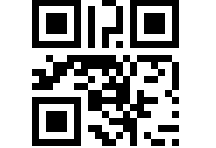Poly Debuts QR System for Seniors Entering and Leaving Campus

A QR code.
March 15, 2018
Senior James Decker has put his computer science skills to use by writing code for a program that keeps track of seniors coming and going from campus. When leaving campus, the security guard at the gate scans the student’s QR (quick response) code on their phone, recording the time the student left.
“The idea for this system came from the administration, which was looking for a better way of keeping track of students leaving and entering campus,” said Charles Polizano, the Director of Technology and Computer Science Department Chair. “While more extensive and expensive options are being explored for attendance and busing, it was suggested that the technology department test how a QR code based system would work with a subset of our students.”
“Given that seniors have the flexibility to leave campus throughout the day, they were the best group with which to build and test, especially since they were relying on a paper-based system for getting permission to leave,” Polizano said.
When approached with the idea, Decker immediately began writing the code.
“All the seniors have an image ID on their phones. I knew I could write the code for a QR scanner so that it is easier for them to leave during the day,” said Decker.
Decker’s QR scanner successfully identifies each senior based on their QR code and records when that senior leaves campus. Then, when the senior returns, the QR scanner will rescan their image and record their return to campus.
The premise of the scanner seems pretty simple, but the developmental process of creating it was much more complex. “What started off as a relatively simple form grew into an extensive program that integrated Google Apps script, HTML, and Google Sheets formulas,” said Polizano.
Originally, instead of a QR scanner, the system was going to be a simple check-in/check-out form. However, Polizano said, “As with any good design, we started with the problem that we were attempting to address, and then developed ideas on how to tackle it.” The QR scanner seemed like the best design for keeping track of seniors leaving campus. “Once we had a working solution,” continued Polizano, “we continued to prototype and test the program regularly.”
Overall, it took Decker and Polizano around two weeks of hard, focused work to come up with the finished product. Although the project was undertaken by both Polizano and Decker, Polizano noted that “There were several times where I went to sleep while one version of the program existed, only to find an enhanced version when I awoke. James really ran with this project, constantly finding new ways to improve its functionality and efficiency.” Ultimately, the two were successful after the eighth version of code.
























